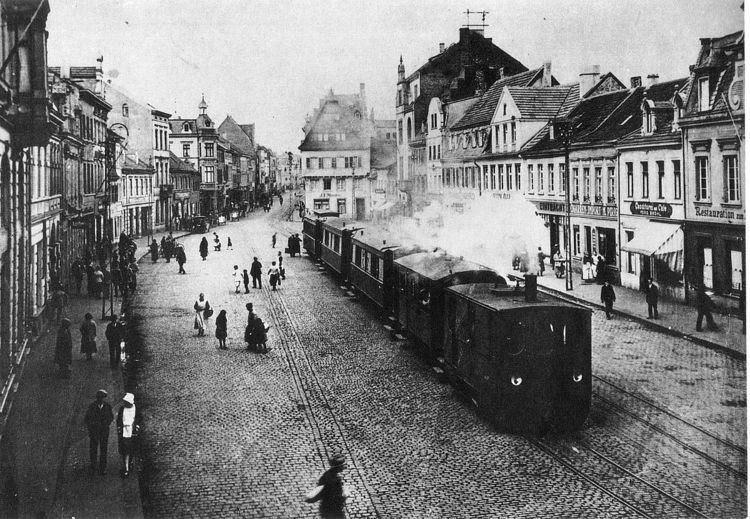 | ||
A tram engine is a locomotive specially built, or modified, to work on a street, or roadside, tramway.
Contents
Steam tram engines
In the steam locomotive era, tram engines had to comply with certain legal requirements, although these varied from country to country:
To avoid smoke, the fuel used was coke, rather than coal. To prevent visible emission of steam, two opposite systems were used:
United Kingdom
Beyer, Peacock and Company built some steam tram engines, including three for the Glyn Valley Tramway in Wales.
Hughes's Locomotive & Tramway Engine Works, Loughborough started building tram engines in 1876. His engines were of the saddle-tank type and exhaust steam was condensed in a tank under the footplate by jets of cold water from the saddle-tank.
Kitson & Co. started to build tram engines in 1878. They used a roof-mounted, air-cooled, condenser of thin copper tubes in which the exhaust steam was condensed. This is rather like the radiator on a modern road vehicle. The air-cooled system eventually became standard for steam tram engines.
William Wilkinson of Wigan patented the exhaust steam reheating system about 1881. It now seems bizarre to re-heat steam after, rather than before, use because it would involve waste of fuel. Despite this, the Wilkinson system was popular for a time and engines of the Wilkinson type continued to be built up to about 1886. Similar reheaters were also used for road steam wagons, such as the Sentinel.
Other British builders of steam tram engines included:
Germany
The German firm Krauss built steam tram engines, including one for the Wolverton and Stony Stratford Tramway in England.
Decline
Steam tram engines faded out around 1900, being replaced by electric trams or buses.
Preservation
In popular culture
The character Toby the Tram Engine, from The Railway Series children's books by the Rev. W. Awdry, and the spin-off TV series Thomas & Friends, was based on the LNER Class J70 tram engines that were to be found on the Wisbech and Upwell Tramway.
Diesel tram engines
Four of the British Rail Class 04 diesel locomotives were fitted with sideplates and cowcatchers for working on the Wisbech and Upwell Tramway.
Electric tram engines
There are a few examples of electric tram locomotives designed to pull traditional railway carriages through streets.
Stored energy types
Tram engines have been built to run on stored energy in various forms, including:
These engines have not met with great success because of their limited range.
